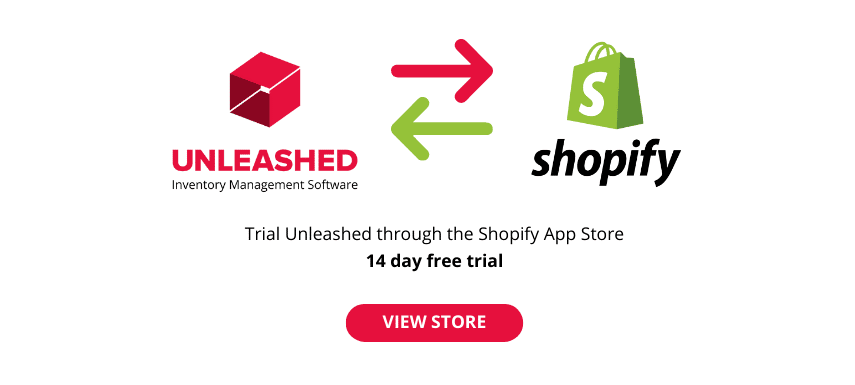
Effective shipping is crucial to any eCommerce strategy, particularly as customers demand faster and easier access to products. But to be able to provide consumers what they want when they want it, a successful eCommerce shipping process starts long before someone places an order.
In this ultimate eCommerce shipping guide for SMEs, we cover the essential elements for your shipping process, identify the challenges you may face, look at different types of eCommerce shipping, and offer tips on how to plan your businesses eCommerce shipping strategy.
What is eCommerce shipping?
Ecommerce shipping is how you deliver products to people who have purchased from you online. It's the last step in the supply chain, but is probably the most important if you want to build a community of satisfied, loyal customers.
Returns – commonly referred to as reverse logistics – are also a key part of eCommerce shipping. A straightforward return process is crucial for not only your customers, but to ensure you don't experience loss of products or lose the potential for resale.
 Ecommerce shipping is the final process in the supply chain, and is crucial to keeping customers happy
Ecommerce shipping is the final process in the supply chain, and is crucial to keeping customers happy
What's involved in the eCommerce shipping process?
There are a number of key steps to the order fulfilment process, all with their part to play to ensure the final customer destination is reached as effectively and efficiently as possible.
-
Receiving the goods and/or materials for your store from a supplier, which should include checking you receive what was ordered, and remedying any discrepancies immediately.
-
Ensuring adequate, organised storage for your inventory, so it can be easily accessed for quick picking and packing.
-
Order processing when a purchase is made online. Depending on the size of your business, you will likely have a specific procedure for this to run smoothly.
-
Arrangements for shipping after an order is made. Again, this will depend on the size of your business – whether you have a daily shipment pickup, or an on-call courier.
-
A simple yet structured returns process. With an estimated 25% of eCommerce orders returned to the retailer, this is the crucial final step of the eCommerce shipping process.
Outside of the above steps, you also need to consider demand planning and inventory management. You can't order and receive goods from suppliers if you don't know the quantity required – too little and you'll miss out on sales, too much and you're at risk of product loss or having to discount to move stock.
And you'll also struggle to manage your inventory if you don't have a system in place to control adequate warehousing space for your stock, as well as having a real-time view of stock levels, stock-outs and oversupply. We'll come back to this below.
 The fulfilment process involves a series of steps, only at the end of which are shipping and returns
The fulfilment process involves a series of steps, only at the end of which are shipping and returns
Why is eCommerce shipping so important for SMEs?
The reason accurate and timely shipping is crucial for SMEs is that it lowers costs, ensures customer satisfaction and retention, and improves your competitiveness.
Let's have a closer look at the advantages of efficient eCommerce shipping for SMEs.
1. Customer satisfaction
The number one reason shipping is so crucial for SMEs is that your whole business relies on customers being satisfied with your stock levels and delivery.
63% of customers expect a standard delivery to arrive within three days of ordering, which means your shipping has to be fast and efficient.
And perhaps even more critical, 94% of customers blame retailers for a poor delivery – which places the onus on you to have control over what happens to your packages once they leave your premises.
2. Picking and packing
Having an effective picking and packing process will allow you to move quickly from receiving an order to having it ready for dispatch and shipping. Accuracy is key, as mistakes will raise shipping costs – and impact customer loyalty.
3. Minimising loss of returns
Shipping also includes returns, and handling these in the right way will help you to put these items back into circulation (if possible), as well as remedy the customer's needs, whether they want a replacement, refund or store credit.
If you are unable to keep track of where stock is, you could be losing out on potential resale, and you could be risking losing your customer due to a confusing return process.
4. Having stock on hand
Effective eCommerce shipping also relies on the right stock levels being held in storage, so you're able to fulfil orders as soon as they come in.
5. Lowering shipping costs
With the right process in place, there are many opportunities to reduce shipping costs overall – from restructuring your picking and packing, gaining insights into where greater efficiencies can be achieved, and optimising your supply chain for better stock performance.
6. Improving your competitive advantage
By focusing on all the ways you can improve your shipping, you'll be able to expand your customer base. This can be done through offering multiple shipping options, giving people a real-time view of where their order is, and free returns and exchanges.
 Consider different options for your eCommerce shipping to keep your current customers loyal and attract new ones.
Consider different options for your eCommerce shipping to keep your current customers loyal and attract new ones.
What are the challenges of eCommerce shipping for SMEs?
Growing pains are real in SMEs, especially when it comes to the varied challenges of eCommerce shipping. Do you recognise any from the list below?
-
Lack of resources to set up the required shipping operation. Small & growing businesses often can't afford the financial outlay of setting up a sufficient system.
-
Difficulty sourcing a provider who can meet the needs of the business today, but flexible enough to grow and scale as sales increase.
-
Minimal in-house expertise and lack of staff resource to take responsibility for shipping.
-
Not being prepared or able to quickly scale for fluctuations in demand (e.g. over holiday periods).
-
Inability to cope with supply chain disruptions. As a small operator, your orders may not be prioritised over more substantial businesses.
-
Time spent on shipping ends up reducing the time you could be spending on more strategic and operational tasks within the business.
-
As an SME, it's hard to compete with bigger companies like Amazon that have huge budgets and resources to invest in advanced shipping methods.
-
Understanding what is required to researching the right software that will work for your business can be extremely time-consuming and stressful – especially if it requires a significant financial investment.
-
High shipping costs being passed onto the customer. When you're competing against the big guys, it's hard to get discounted courier/shipping. Yet making your customers pay the full price could have a negative impact on your business. This 2018 study found that 54% of customers abandoned their online shopping cart because of the high shipping costs.
Different eCommerce shipping methods
There are a few different ways to embrace eCommerce shipping, allowing you to choose the one that works best for you and your business.
Here's a breakdown of the three most common approaches, along with their advantages and disadvantages.
1. In-house eCommerce shipping
This is the DIY option, where your business is solely responsible for the end-to-end shipping process, from ordering products, to storage, picking and packing, shipping and returns. For startups and small operators, this is where most businesses start their eCommerce journey, with good reason. It allows you to have complete control over every aspect as well as minimising shipping costs by not outsourcing.
Example: Despite being a global conglomerate – and able to easily afford the outsourcing fulfilment – Swedish furniture giant Ikea has kept its fulfilment operations in-house. They have hundreds of warehouses and fulfilment centres worldwide to manage orders, but all of the processes remain in-house.
Advantages of in-house
-
There is minimal financial outlay by keeping the process in-house.
-
You're able to have complete control over shipping, allowing you to reduce the risk of inaccuracy and delays.
Disadvantages of in-house
-
As order numbers grow, it may start to negatively impact other areas of the business due to more resources and time spent on eCommerce shipping.
-
You could be missing out on optimisation of the shipping process, due to not having the right in-house expertise or specialisation in place to ensure efficiencies and strategies for cost reductions.
 In-house shipping can help you keep costs to a minimum and reduce delays, but businesses can also benefit from greater expertise by outsourcing fulfilment tasks.
In-house shipping can help you keep costs to a minimum and reduce delays, but businesses can also benefit from greater expertise by outsourcing fulfilment tasks.
2. The dropshipping eCommerce shipping model
Dropshipping is a lot more ‘hands off' in terms of running an eCommerce store. You don't buy stock or inventory, but you simply establish relationships with manufacturers who will hold onto the merchandise until you make a sale.
When you receive an order, you pass this information onto the manufacturer, who will then carry out the complete process of fulfilment and shipping to the customer. Your profit comes from splitting costs with the manufacturer.
Example: Many businesses use well-known dropshipping suppliers – such as AliExpress, eBay or Amazon – to create their eCommerce store. They establish a relationship with suppliers so they have access to the products they want to sell, and then set up their website to sell these items directly to consumers.
Behind the scenes, it is actually AliExpress or one of the other suppliers that then fulfils orders for the business.
Advantages of dropshipping
-
You don't have to invest in stock and storage, minimising outgoing costs.
-
Less risk involved by not having to hold and maintain stock that doesn't sell.
Disadvantages of dropshipping
-
Your profits are lower than when you own the stock yourself.
-
You have no control over the fulfilment process, putting you at greater risk of not meeting your customers' delivery expectations.
3. Third-party logistics for eCommerce shipping
Third-party logistics (AKA 3PL) works by your business purchasing or manufacturing products that will be sold online, with you paying up front for the merchandise. Then all of your stock is sent to a 3PL fulfilment service, which is then responsible for shipping items to customers when they place an order.
The revenue you receive is the difference between the sale price and your wholesale cost, plus overheads.
Example: Fulfilment by Amazon (Amazon FBA) is a well-known 3PL provider. You get the sales through your online eCommerce store, then picking, packing, shipping and delivery are outsourced to Amazon. They also take care of customer service and returns.
Advantages of third-party logistics
-
With 3PLs there is no need for storage, setting up picking and packing, or employing staff for fulfilment.
-
Specialist 3PL providers will be able to expertly streamline the shipping process and reduce overhead costs from their large-scale operations.
Disadvantages of third-party logistics
-
As with dropshipping, you don't have control over the dispatch and shipping process, which if done badly impacts directly on your business.
-
There are often high fulfilment costs, meaning you receive less profit from products you sell.
 3PLs specialise in logistics, meaning you can take advantage of their expertise and economies of scale.
3PLs specialise in logistics, meaning you can take advantage of their expertise and economies of scale.
Planning your eCommerce shipping strategy
After gaining a solid understanding of what's involved with eCommerce fulfilment, now you can begin to plan your own shipping strategy. Here are some of the questions you should be asking yourself.
1. Should you outsource your eCommerce shipping?
This can be a tricky one to consider, and making the right decision will come down to each individual business and their financial situation. It will also hinge on the kind of products they are selling: are they highly specialised, or more of a generic commodity?
Some advantages that come from outsourcing include that you are able to expand and scale operations quickly, that you can leave fulfilment to the experts so you can concentrate on other aspects of business development, and that you can reduce some of your larger overheads (like warehousing space).
2. Where should your fulfilment centre be located?
Remember, a fulfilment centre is not the same as a warehouse. A warehouse is where your stock is stored, while a fulfilment centre has the primary purpose of dispatching orders to customers as soon as possible. That's why it makes sense to ensure your fulfilment centre is centrally located in terms of where your customers are. It means orders will reach them faster.
3. What fulfilment time should you aim for?
This will depend on your products (e.g. are they made to order?), but generally for an in-stock item, consumers have an expectation that it will be between two to five days. The longer it takes, the less of a good impression you'll be making on your customer. Same day delivery and expedited shipping services can have a role in your shipping strategy, but won't suit every business model.
4. What eCommerce shipping solutions will you use?
For shipping to run efficiently, you need to have integrated eCommerce technology to cover order management, inventory, shipping and tracking. What kind you need will depend on your business and its size, but end-to-end visibility is not just a nice-to-have; it's imperative for total control over fulfilment.
5. How will your warehouse and fulfilment centres be organised?
Where and how you fulfil orders needs to be set up in a way that allows for fast and easy picking and packing.
6. Do you have a plan for international shipping?
If you're new to eCommerce it can be easy to assume that all your customers will be local – only to find that the internet is a very big place, and orders can come from anywhere. It's worth planning how you'll handle international shipping, including what rates you'll charge – for example if you offer free shipping, will this be exempt on international shipping?
7. How will you handle returns and exchanges?
What will this process look like and how will it work for your business? How will you ensure this remains uncomplicated for your customers – and communicate this on your online store?
8. Are you leveraging the power of shipping?
Some businesses use free shipping as a customer acquisition tool – that's how important it is to consumers. In fact, 54% of consumers say delivery will define who they shop with. If free shipping is too costly as a startup, can you build it into the price of your products? Or could you offer free shipping on orders over a specific amount?
 Inventory management is crucial for eCommerce fulfilment success – even for small- to medium-sized businesses
Inventory management is crucial for eCommerce fulfilment success – even for small- to medium-sized businesses
Ecommerce shipping trends
For an industry that didn't exist 50 years ago, eCommerce has rapidly taken off and continue to evolve.
Here are the major trends in ecommerce shipping to watch out for.
Optimising ordering costs
Businesses need to think both inside and outside of the box (literally) when they are working on ordering cost while designing products and packaging.
As shipping and warehousing costs are based on the size of a product, businesses need to look at how they are spending their money during the product design period. Shipping and warehousing are major costs for any eCommerce business that only increase as more products are sold.
Improvements such as utilising space within packaging through decreasing wasted space and ensuring finished boxes are effectively stacked on to pallets for warehousing and transportation could ensure that hundreds of additional products are shipped per truck.
Branded packaging
Branded packaging is more affordable than ever, so why miss out on additional advertising via a medium that is already being paid for? Picture any package delivered from Amazon with its cheery logos and sustainable-looking exterior, and you'll start to appreciate the value for your brand of investing in custom packaging.
Flat rate shipping
Flat rate shipping is where you offer a single rate regardless of the size & weight of the product purchased – or the distance being sent (or both). Flat rate shipping is appealing to shoppers as it allows to them to make a decision about buying with a better understanding of the end cost: we've all had that disappointing experience of adding an item to a cart, only to discover the shipping cost puts it way beyond your budget. And of course it's a poor customer experience to ask potential buyers to calculate shipping rates – or feel punished by being too far from your fulfillment center.
However before you commit to a flat rate shipping strategy, it's important to carefully review what shipping cost you're willing to absorb - especially if you're shipping internationally.
Free shipping
The ultimate enticement to price-sensitive consumers, offering free shipping on your online store is increasingly common – but again requires due diligence and a clear understanding of your average order value. Free shipping policies should be carefully costed as part of your shipping strategy – with different scenarios considered.
Free shipping on orders that travel a long way can end up costing you more than you make. You should also be careful of rolling out a free shipping policy if your goods are heavy and you pay your shipping partner by weight.
Flexible delivery timeframes
Consumers and businesses alike have come to expect rapid delivery of their purchases.
However, delivery services come at a cost which can increase the ordering cost of the product. Minimising product packaging can help with this, but suppliers also need to build their fulfilment network efficiently.
A large part of the retail business model is providing instant gratification to shoppers, which has kept traditional retail stores in business for years.
However, eCommerce businesses are finding that the faster they can get their products to the purchaser the more likely they are to buy.
Warehouse efficiency
eCommerce businesses rely on networks of warehousing in their fulfilment processes in order to get their products from factories to the end buyer.
Traditionally warehousing has been labour intensive. However, warehousing is getting a makeover with robots becoming a normal feature within the aisles of modern warehouses.
Warehousing also needs to be reviewed to ensure that space is being used as efficiently as possible. As warehouses are often located near major cities in order to meet delivery timeframes and demand, space often comes at a premium cost.
Warehousing companies need to ensure that their operations are reviewed so they are operating at maximum efficiency and capacity which may be achieved through improvements such as new shelving systems and product movement solutions.
This will make warehouse operators a more attractive choice to eCommerce suppliers who are looking for efficient partners in their eCommerce shipping operations
Why is inventory management crucial for eCommerce shipping?
When you consider that two-thirds of inventory or fulfilment issues are caused by human error from manual processes, automated inventory management is crucial for a successful eCommerce shipping strategy. Even for small-scale operations, having inventory management in place is important for minimising issues and allowing for a real-time view of stock.
It will also give you the ability to make informed decisions for your operational requirements. How much stock did we sell last Christmas? Were there any peaks throughout the year that put greater demand on our fulfilment? How quick are we at fulfilling orders, and is there any way to improve this while keeping high levels of accuracy?
With your customers' experience as your number one priority, can you afford to not have eCommerce shipping solutions that allow you to both meet fulfilment expectations, and ensure the process leading up to an order being placed is efficient and results-driven?

